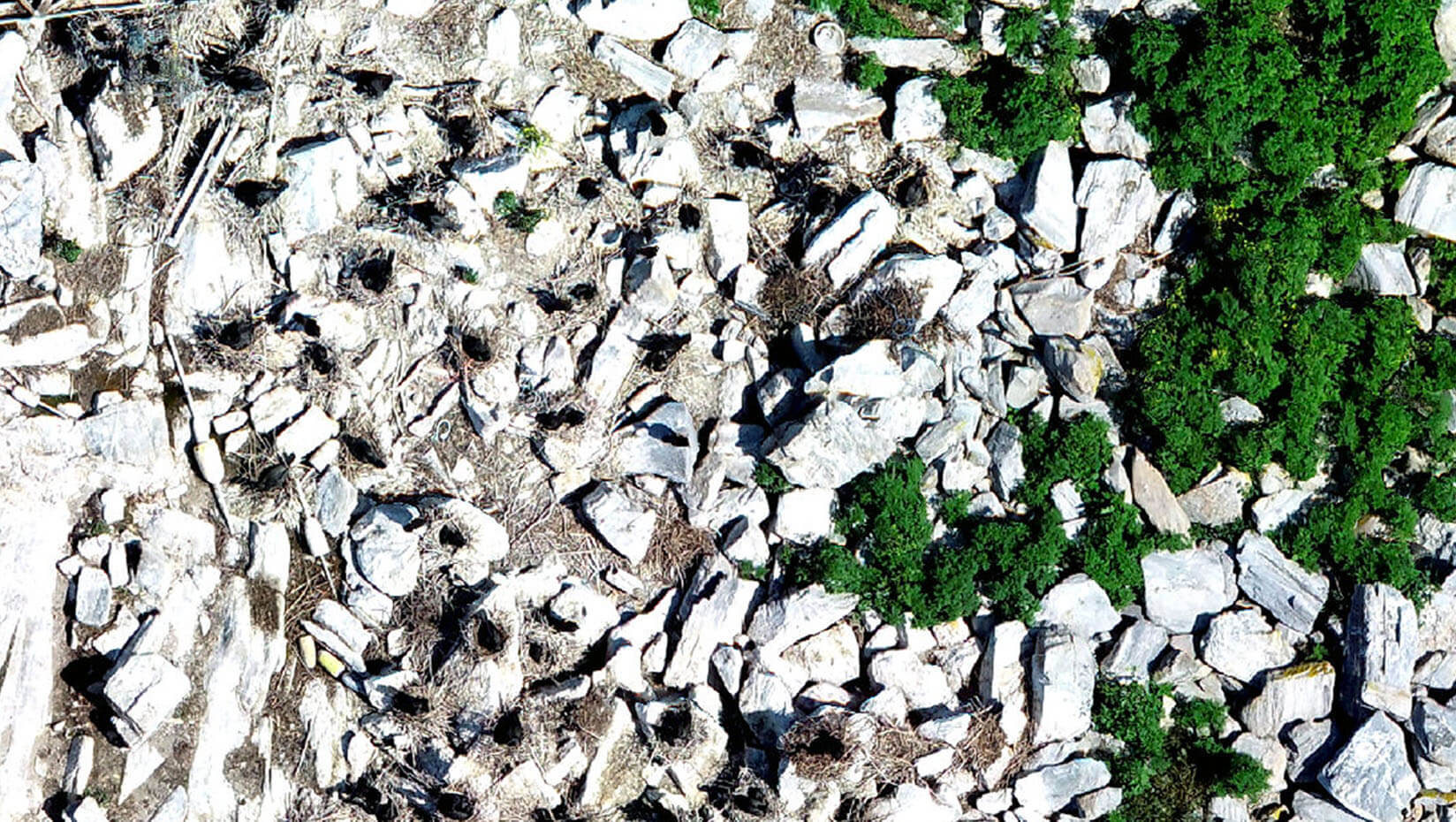
UMaine researchers team up to develop AI to count, identify birds in aerial photos
Biologists count and identify birds in thousands of aerial photos when conducting wildlife surveys, a laborious task that consumes many hours. To reduce time spent analyzing images and the margin for error, University of Maine researchers endeavor to create artificial intelligence that will perform the task.
Faculty and graduate students from several units at UMaine will collaborate to develop machine learning technology that can pinpoint colonial nesting birds in photos captured by cameras mounted in unmanned aerial vehicles (UAVs) or planes. The AI developed by UMaine researchers will use object recognition and image segmentation to determine the number of birds, their species and behaviors in aerial photos captured on Maine’s offshore islands and over inland rookeries during the spring and summer months.
Researchers involved in the effort include Roy Turner, associate professor of computer science and director of the Maine Software Agents/Artificial Intelligence Laboratory (MaineSAIL); Cynthia Loftin, associate professor of wildlife ecology and leader of the United States Geological Survey Maine Cooperative Fish and Wildlife Research Unit; Salimeh Yasaei Sekeh, assistant professor of computer science; Kate Beard-Tisdale, professor of spatial information science and engineering; Daniel Hayes, Barbara Wheatland Associate Professor of Geospatial Analysis and Remote Sensing; David Sandilands, aerial survey pilot and remote sensing technician with the Wheatland Geospatial Lab in the School of Forest Resources; and Anthony Guay, remote sensing technician specialist with the Wheatland lab and School of Forest Resources.
The project received $43,000 from the UMaine AI Initiative seed grant funding program, and builds on previously funded grants and partnerships involving UMaine faculty and state and federal agency partners. Researchers hope to improve the efficiency and accuracy of colonial nesting bird surveys with artificial intelligence.
“Humans are prone to fatigue, error,” says Turner. “It takes forever to do this by hand. Graduate students can take several hours identifying birds in one image.”
The project coincides with the UMaine AI initiative, an effort to transform the state into a world-class hub for artificial intelligence research and education and develop AI-based solutions that enhance social and economic wellbeing.
Turner and his team plan to develop their Convolutional Neural Network (CNN), a deep learning AI algorithm typically used for visual analysis, using a method for image segmentation called Mask R-CNN, although Turner says they will explore other tactics. Researchers will use components of the University of Maine System Computer Cluster, managed by the Advanced Computing Group, that provide about four petaflops of processing power, which were previously purchased with a National Science Foundation Major Research Instrumentation grant Turner helped secure, to execute their project.
The CNN will find and classify the birds in an image by analyzing the pixels that form them. Turner says the network analyzes the pixels in much the same way a person’s visual system does to detect and identify objects.
To test their network, the scientists will task it with pinpointing and specifying birds in images that other researchers have already analyzed to ensure the AI achieves the same results. Turner says his team plans to develop, evaluate and launch the machine learning tool by fall 2021.
Turner says he believes the technology could be incorporated into UAVs to identify birds as they photograph them. Implementing AI into UAVs could result in additional nesting surveys by providing scientists a better view of inaccessible areas like remote islands with dangerous terrain and rookeries with birds nesting in the canopy tops, Loftin says. The new method of surveying could also reduce disturbance to colonies, particularly by eliminating the need to walk around in their habitats, which also could allow for more surveying later in the season.
“This project provides an exciting opportunity for wildlife and computer science students to work together to apply emerging technologies to help wildlife conservation practitioners solve a real-world problem,” Loftin says.
Professors recruited Alex Revello, a master’s student of computer science, to help integrate the CNN. Meredith Lewis and Logan Kline, master’s students in the Ecology and Environmental Sciences program in the Department of Wildlife, Fisheries, and Conservation Biology, are developing protocols for using UAVs to collect imagery of nesting colonial birds and evaluating how this methodology can reduce disturbance while also enhancing survey efficiency. The team also employed undergraduates in summer 2020 fieldwork and recruited a new group of seniors to help with the project this semester and in spring 2021 as their Capstone project.
“This is the future of a lot of research, interdisciplinary teams that also involve AI analyzing data,” Turner says. “I think this is going to be the normal kind of way of doing business, interdisciplinary teams that usually involve some sort of computer science.”
Contact: Marcus Wolf, 207.581.3721, marcus.wolf@maine.edu
